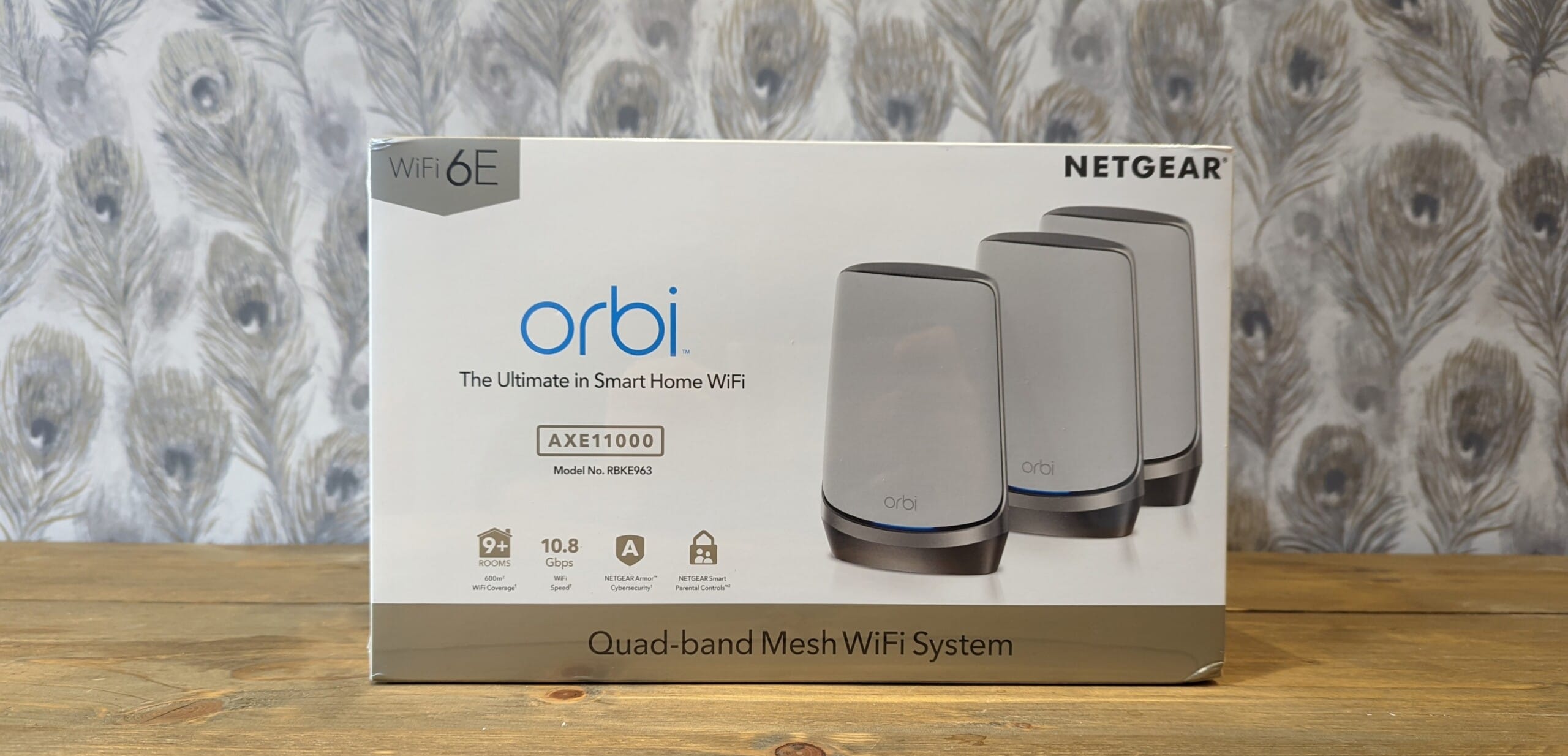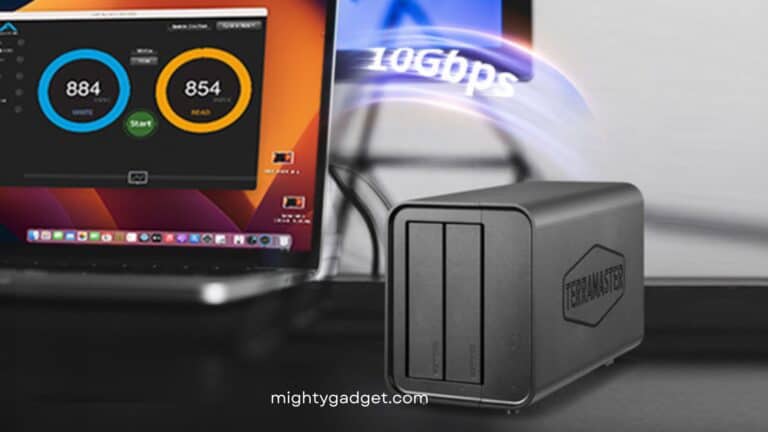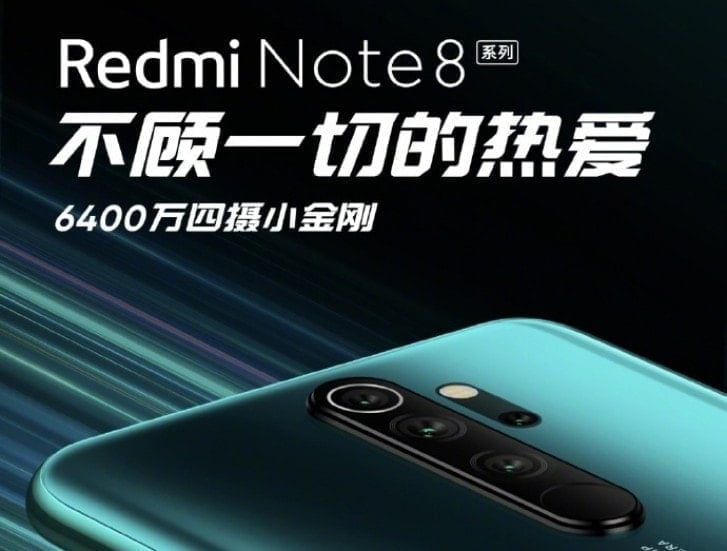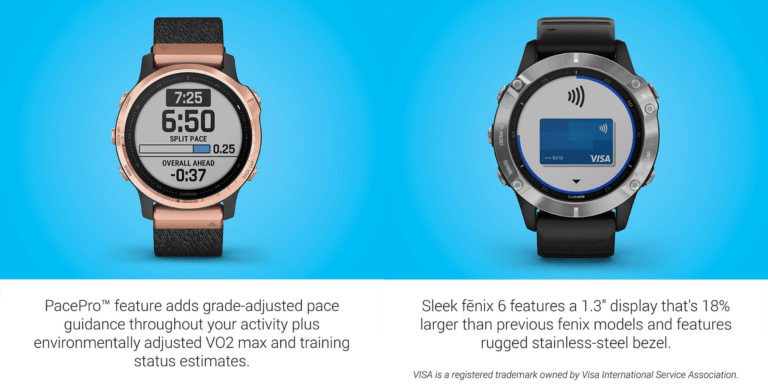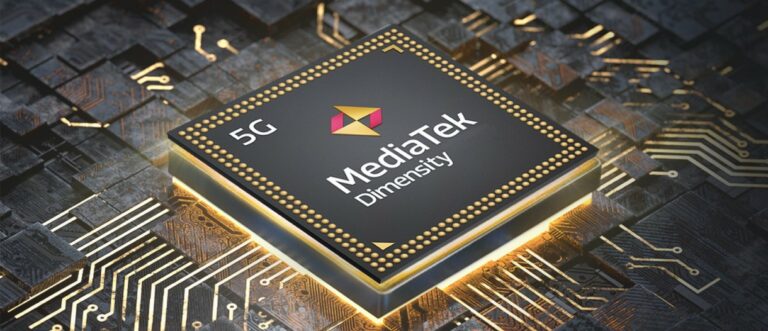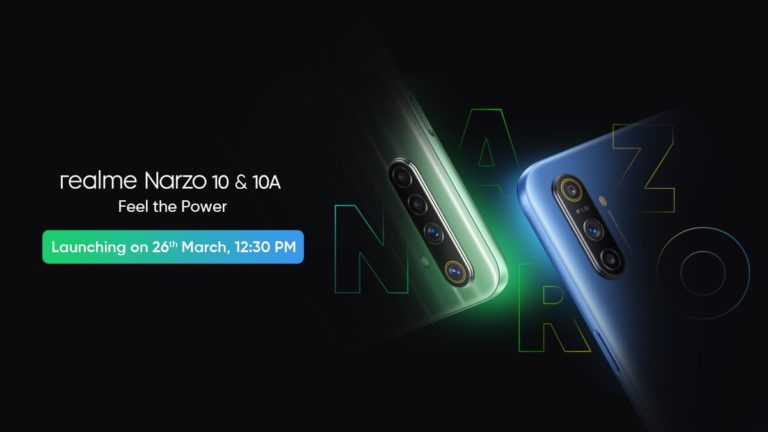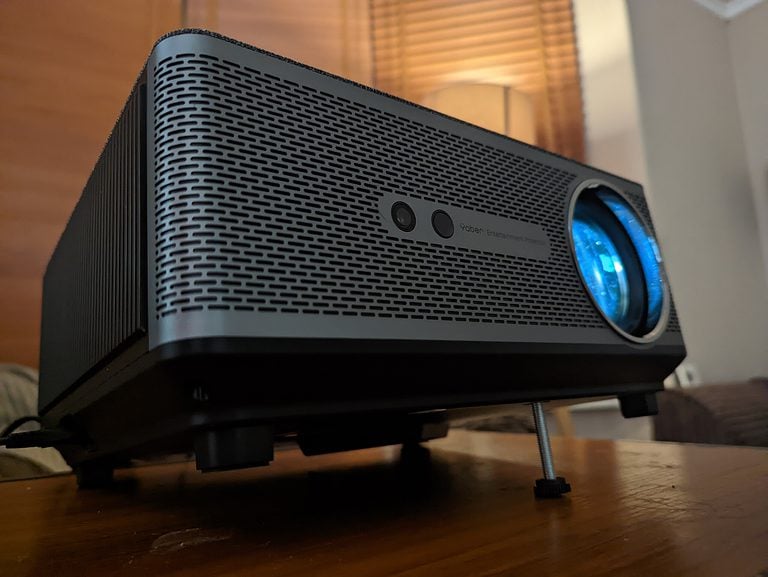Any links to online stores should be assumed to be affiliates. The company or PR agency provides all or most review samples. They have no control over my content, and I provide my honest opinion.
With the UK gigabit Internet rollout finally making some progress and many of us working from home, our older WiFi routers and mesh systems may start to struggle to provide the best speeds possible.
WiFi 6E is the latest WiFi standard and can easily provide faster than gigabit throughput thanks to the new 6Ghz channel. In my reviews, I have been able to achieve 1.49Gbits/sec speeds using 6Ghz in close proximity and 907Mbit/s when connecting from a different room to the router.
Most laptops launched in the past couple of years should support this, and many phones launched this year, and some from last year, support it. It is also quite easy to upgrade a desktop PC to support it.
Mesh WiFi 6E systems are not cheap, and there are not many options on the market. There is currently only one system that can provide the best possible speeds throughout the home, thanks to the quad-band design.
Tri-Band vs Quad-Band
With WiFi 6E, you have 2.4Ghz, 5Ghz and 6Ghz. So, the old comparisons of dual-band and tri-band now become tri vs quad.
Essentially, whenever a band gets shared between the client and backhaul, you see a significant drop in throughput, roughly 50%, due to signal loss.
It is perhaps more confusing with WiFi 6E, as the choice of backhaul becomes harder. Most devices use 5Ghz, so you’d want that to not be shared. However, 6Ghz has a shorter range than 5Ghz, therefore it is going to be difficult to get optimal performance.
WiFi 7 vs WiFi 6E vs WiFi 6
I have covered the difference between WiFi 6E and 6 quite a bit already but worth going over again. Considering WiFi 5 was out for so long before WiFi 6, you may be surprised to see that WiFi 7 appears to be just around the corner. It is believed that the slow uptake of WiFi 6E is because some vendors are holding off for WiFi 7.
WiFi 6 introduced various new technologies to improve the overall speed of the existing WiFi bands. The maximum theoretical throughput for an 80Mhz 2×2 client went from 866Mbps to 1200Mbps, or double that for 160Mhz.
WiFi 6E then adds the new 6Ghz band, which is considerably less congested and allows for 7 additional 160 MHz channels vs the 2 that are available with WiFi 6.
WiFi 7 then builds upon this and allows 320Mhz channel width, which would improve the maximum speed on 160Mhz to 4.8Gbps for a 2×2 client.
WiFi 7 also supports double the amount of partial streams, up to 16, giving you a total of 40Gbps bandwidth.
It will then quadruple the QAM or quadrature amplitude modulation to 4096, which allows a router to fit more information in each Hertz.
WiFi 7 is expected to be finalised by 2024, but we will likely see devices bore then. Back in February, Qualcomm announced the FastConnect 7800, which is the first chip supporting the standard. MediaTek is expected to announce something soon. Vendors will then need to integrate these chips into a consumer device.
Best Mesh WiFi 6E Routers
For UK buyers, there is not much choice with just three systems available to buy. This should improve over the year.
Netgear Orbi AXE11000 RBKE963
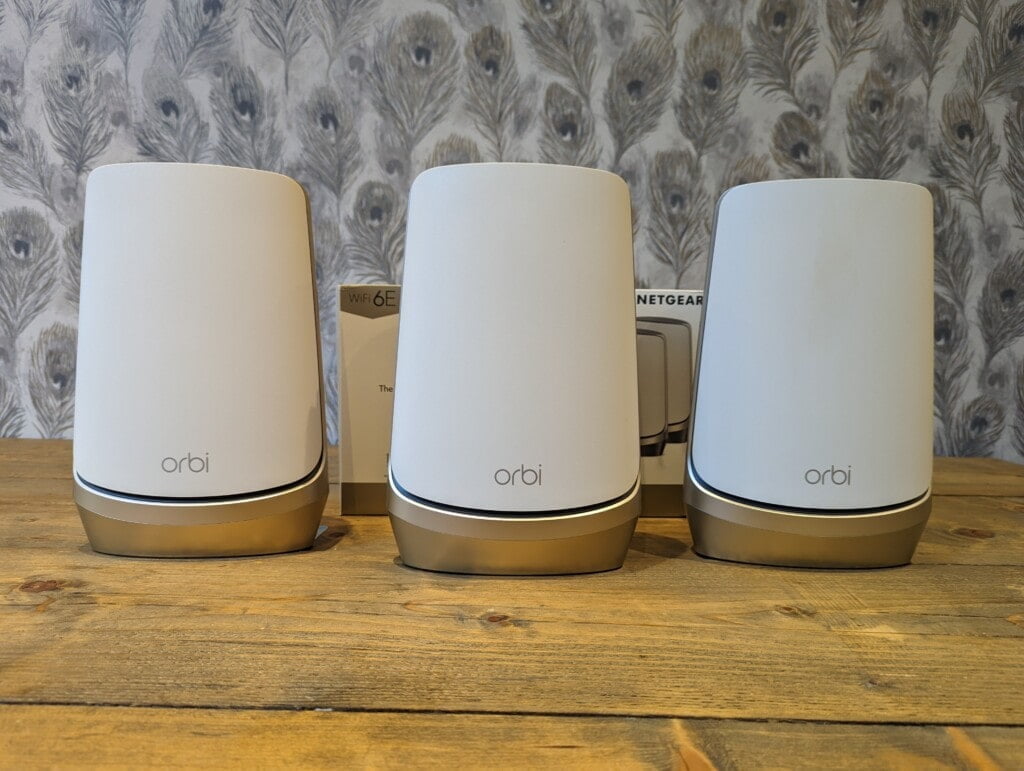
| Preview | Product | Rating | Price | |
|---|---|---|---|---|

| NETGEAR Orbi WiFi 6E Mesh System (RBKE963) – Quad-Band... | £1,499.00 | Buy on Amazon |
It is a bit hard to get over the sticker shock of the Orbi RBKE963, but it is the best WiFi 6E mesh system on the market. If you want the absolute best performance, then you have to pay for it.
The reason for this price is the quad-band design. You have the dedicated 4×4 5Ghx backhaul between the router and satellites, then the three separate bands covering 2.4Ghz, 5Ghz and 6Ghz for your clients.
You then have a 10GbE on the WAN port and a 2.5GbE LAN port for both the router and satellites, plus an additional three gigabit ports.
It is the fastest mesh system I have ever reviewed, and it is likely to stay that way for a long time.
ASUS ZenWiFi ET8
| Preview | Product | Rating | Price | |
|---|---|---|---|---|

| ASUS ZenWiFi Whole-Home Tri-Band Mesh WiFi 6E System (ET8... | £352.65 | Buy on Amazon |
I can only find the ASUS ZenWiFi ET8 as a 2-pack system, and it is a tri-band design, so this is considerably more affordable than the Netgear.
The main differences between the ET8 and Pro ET12, which I list below, is that the 12 stream Wi-Fi 6E router: 4×4 (2.4GHz) + 4×4 (5GHz) + 4×4 (6GHz). Whereas the ET8 is only 8-stream with 2×2 (2.4GHz) + (2×2 5GHz) + 4×4 (6GHz).
Then the ET12 then has 2×2.5GbE, one for LAN, one for WAN, while the ET8 just has a single 2.5GbE WAN port.
It uses AiMesh, which allows you to pair it with any other Asus router that also supports AiMesh.
I have not reviewed a tri-band WiFi 6E system yet, so I am unsure how much of an impact this design will have on throughput.
ASUS have done something a little bit different than expected with this system. The 4×4 6Ghz band is used for the backhaul, but I believe it is possible to switch to 5Ghz.
6Ghz has a shorter range, if you place the two devices too far away, the router will switch to one of the low frequencies. If it used the 5Ghz as the backhaul, you’d suffer roughly 50% signal loss.
It makes for a bit of an odd set up. While most people don’t buy a mesh system with the intention of wiring them together with Ethernet, if you did with this system, it would provide full bandwidth for all three radios while at the same time offering great value for money vs the Netgear.
Asus ZenWiFi Pro ET12
| Preview | Product | Rating | Price | |
|---|---|---|---|---|

| Asus ET12 AXE11000 Whole-Home Tri-band Mesh WiFi 6E System... |
£599.99 | Buy on Amazon |
The Amazon listing for the Asus ZenWiFi Pro ET12 is a bit confusing, there is no mention of WiFi 6E anywhere, and it implies that it is a tri-band WiFi 6 system with two 5Ghz bands. However, everywhere else, including the Asus website, says this is a tri-band WiFi 6E system, one radio for 2.4Ghz, 5Ghz and 6Ghz.
I assume whoever created the Amazon page has updated it from the older none-pro Asus ZenWiFi ET12 which was WiFi 6 only.
TP-Link Deco XE75
Not available in the UK yet, this is a bargain-priced WiFi 6E mesh system price at $300. You can import it from Amazon US with the final price being $382, which would make it just £305.
As you’d expect, some features are cut back to keep this priced low. It is only 2×2 with 6 streams, and you only have gigabit ports. Therefore, you won’t get the absolute best speeds possible.
Linksys AXE8400 Atlas Max 6E
Another tri-band system that is also not available in the UK yet. It is a three-pack system with the full RRP being $1,199.99. It is not available on Amazon US at the moment, but you can buy it from Linksys directly.
This is a 4×4 MU-MIMO design and has 5Gbps WAN port but lacks multi-gig on the LAN ports.
I am James, a UK-based tech enthusiast and the Editor and Owner of Mighty Gadget, which I’ve proudly run since 2007. Passionate about all things technology, my expertise spans from computers and networking to mobile, wearables, and smart home devices.
As a fitness fanatic who loves running and cycling, I also have a keen interest in fitness-related technology, and I take every opportunity to cover this niche on my blog. My diverse interests allow me to bring a unique perspective to tech blogging, merging lifestyle, fitness, and the latest tech trends.
In my academic pursuits, I earned a BSc in Information Systems Design from UCLAN, before advancing my learning with a Master’s Degree in Computing. This advanced study also included Cisco CCNA accreditation, further demonstrating my commitment to understanding and staying ahead of the technology curve.
I’m proud to share that Vuelio has consistently ranked Mighty Gadget as one of the top technology blogs in the UK. With my dedication to technology and drive to share my insights, I aim to continue providing my readers with engaging and informative content.
Last update on 2025-06-30 / Affiliate links / Images from Amazon Product Advertising API

